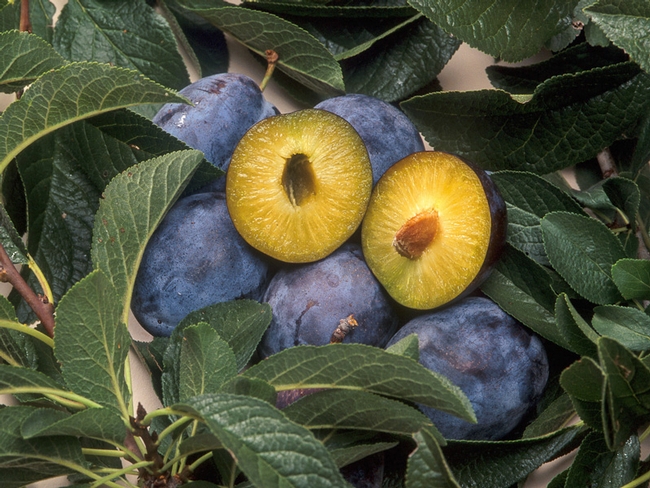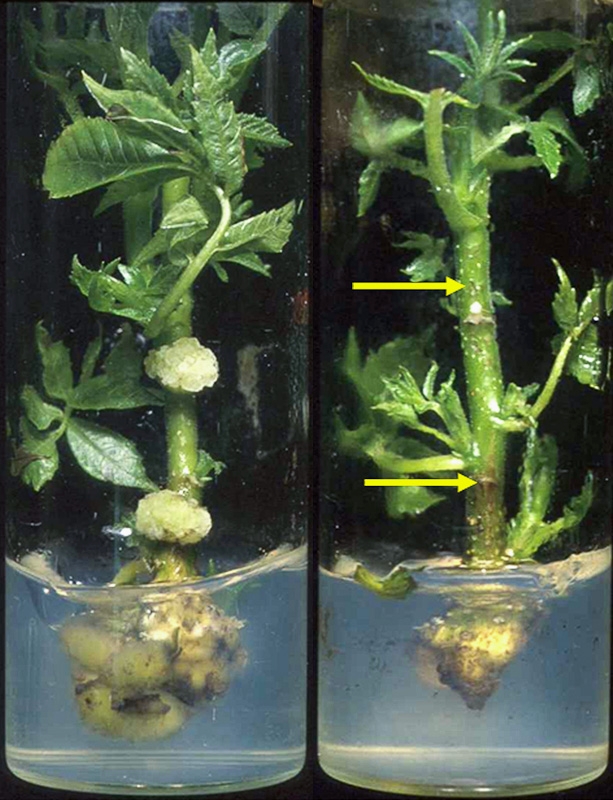Posts Tagged: consumers
It's just a waste, II
A year ago, a co-worker wrote a post on this blog entitled “It’s just a waste.” The sad facts of food waste are something we pay attention to since we work for the UC Postharvest Technology Center. A key component of our Center’s mission is to “reduce postharvest losses.” This topic also hits close to home on a personal level since I have always struggled with using up produce before it spoils. I go shopping about once a week, and tend to purchase just a bit more produce than what we will actually eat – in the hopes that one of us will suddenly adopt healthier eating habits by increasing our intake of fresh produce. I place the produce in my fruit ripening bowl, on the counter, or in the fridge, according to the recommendations on my handy produce storage chart. But nearly every week something goes awry, usually with my schedule, and I end up not serving the delicious produce-based meals I had planned, or I forget to pack my lunch, and oops, the negative effects of delayed consumption hit my produce.

I want to do better, too! I hereby resolve to try harder to stick with my menu plan, pay closer attention to produce on the counter and the fridge (sometimes known affectionately in the produce industry as the “black hole”), and I will try very hard to be more creative in my use or preservation of quickly ripening produce.
My single biggest challenge is bananas. I try to buy a smaller hand of 5 to 6 bananas with some green tint left. They go on my banana hook in a cooler corner of my kitchen. At least half the weeks of the year those bananas have black spots within 3 to 4 days, and by day 5 there are usually 2 to 3 bananas left that are no longer appealing to my family. So almost half the bananas I buy usually don’t get eaten. I know, I know, “buy a smaller hand of bananas,” you say. That’s easier said than done, at least at the markets in which I shop.
Thankfully there are many cooks out there willing to share their recipes for creative ways to use up an over-supply of bananas. Below is a starting list of ideas that I’ll be drawing from as I make an effort to reduce produce waste, and especially banana waste, in our home.
- Slice into 1-inch chunks, freeze in a single layer on a wax paper covered cookie sheet. Transfer into a zip-bag and return to the freezer to use as needed for fruit smoothies or other cooking projects

- Banana bread or banana muffins
- Homemade banana ice cream
- Banana layer cake with cream cheese frosting
- Slice lengthwise, sauté in butter and ¼ tsp. rum flavoring until golden brown, and serve on ice cream
- Banana crunch cookies
- Make banana pancakes, add chocolate chips if desired (here’s a link to a pancake recipe called “Chunky Monkey” my son-in-law likes to make)
- Peel, insert a lollipop or popsicle stick and freeze. Eat as is, or dip in melted chocolate.
- Banana drop cookies
- Slice, dip in fresh lemon juice, and dry in a dehydrator
- Make a warm spiced banana topping that’s great on ice cream or gingerbread
- Banana oatmeal bar cookies
- Banana pudding
- Fruit Skewers
- Bananas Foster
- Banana Daiquiri
- Tropical banana bar cookies with raisins, pecans and coconut
- Banana cream pie
- Peanut butter, banana and rum bar cookies
- Trifle
- Burrito Bananas Foster
- Fruit Salad
- Banana crepes
- Dessert Pizza
- Banana Bundt cake with caramel frosting
- Fruit salsa, served with cinnamon tortilla chips
- Banana split
- Strawberry-banana parfait with yogurt and granola
Postharvest technology is something of a mystery

Working at the Postharvest Technology Center, I often think about how to spread our mission of how to reduce postharvest losses and improve the quality, safety and marketability of fresh horticultural products. Part of doing this is educating consumers about making good choices so they have a better experience eating fruits and vegetables. And, if consumers have a better experience with fruits and vegetables, we eat more of them. If we can create demand at the consumer end, it will trickle through to the people that handle your produce: processors, retailers, distributors, carriers, marketers, shippers and finally growers.
I spoke with Jim Thompson, who wrote “From the Farm to Your Table: A Consumer’s Guide to Fresh Fruits and Vegetables” along with Adel Kader, two distinguished experts in the field of postharvest technology. Thompson said they wrote the publication knowing that, “For most consumers, it’s kind of a mystery what influences the quality of their produce. This publication answers some of the questions of how to make good choices at the market and at home.”
Thompson adds, “There are many things that can steal quality from produce. And it starts at the farm.”
The type of cultivar the farmer chooses to plant and what kind of soil, temperature and light conditions, irrigation and fertilization practices at the farm affect flavor and nutritional quality. When the product was harvested, how it was handled prior to arrival at your market, and how your market stores the product all influence the quality of your produce.
You certainly know which market in town has the best produce section, and it’s important to you. In fact, according to the 2011 National Grocers Association Consumer Survey Report, “Consumers say they are keeping health a priority—and 91 percent regard a stellar produce department as a ‘very important’ factor in where they buy groceries. This is precisely the same percentage as a year ago, which represented a dramatic five-point jump from the 86% level of two years ago. While the recession may have withered wallets, it hasn’t hurt consumers’ resolve on this measure.”

Please contact us at (530) 754-4326 or postharvest2@plantsciences.ucdavis.edu if you’re interested in ordering multiple copies for a nutrition, health or cooking class or you can purchase them through our online bookstore.
Genetic engineering for roots — not fruits
Even though U.S. consumers routinely buy and eat genetically engineered corn and soy in processed foods — most are unaware of the fact because the GE ingredients are not labeled.
When consumers are asked in surveys whether they would buy genetically engineered (GE) produce such as fruit, most say they would not buy GE produce unless there were a direct benefit to them, such as greater nutritional value.

Yet with continuing invasions and spread of exotic insects and diseases for which there is no known control, the potential importance of trees or vines with some form of genetically engineered resistance is on the rise. In California, such diseases include Pierce's disease in grapes, crown gall disease in walnuts, and the invasive citrus greening (huanglongbing or HLB) in citrus.
"These are potentially devastating diseases to California growers, who produce 70 percent of the fresh fruit and nuts for the entire United States," notes Victor Haroldsen, scientific analyst at Morrison and Foerster, in the current California Agriculture. "They are also a mainstay of the California economy. Fruit and nut tree crops accounted for one-third of the state's total cash farm receipts, or $13.2 billion in 2010."
Now, however, Haroldsen reports that there may be a way to satisfy both consumers and growers — called "transgrafting."

"In transgrafting the genetically engineered rootstock can potentially confer the whole plant with resistance to disease. Yet the rootstock does not transfer the modified genes to the fruits or nuts produced," said Haroldsen.
Although over 10 years old, transgrafting technology is just now nearing commercialization, partly due to the long generation times of most trees and vines. Two such transgrafting applications are: a crown gall-resistant walnut rootstock, and a grape rootstock that confers moderate resistance to Pierce's disease.
"The key advantage of transgrafting is that the plant's vascular system can selectively transport across graft junctions the proteins, hormones, metabolites and vitamins from the roots without changing the heritable genes or DNA sequence in the fruit or nut." says Haroldsen.
In recent research at UC Davis, Haroldsen (a former graduate student) and his colleagues confirmed that modified DNA and full-length RNA from the rootstock does not cross the "graft union" into the scion, in the walnut and grape applications, or in a tomato model of these two systems.
"These current GE applications address root or xylem pests and diseases, but future applications will likely target traits aimed at consumer needs such as increased nutritional value or improved flavor," said Haroldsen. "If perceived risks to personal health and the environment could be reduced, genetic engineering could benefit not only growers but Californians around the state," he adds.
Stomach share
What would you think if someone told you that they were fighting for a “share” of your stomach? Bring to mind organ harvesting? Invasion? Theft?
I first heard this term a month ago when I took part in a gathering of food experts. Someone recalled recently overhearing soda company executives brainstorming how they could increase what they referred to as “stomach share.” They were seeking to expand their product lines (from sodas, to juices, waters, and exercise drinks) to make sure that whenever someone drank a beverage, any beverage, it was theirs. What was particularly disturbing, he recalled, was how little the consumer figured in the equation. The goal was to get product into stomach, as often as possible.
The story reminded me of another phrase I’d come across in my research for my book Empty Pleasures — “prosperity stomach.” Coined in 1966 by Henry Schacht, an executive from a diet-food company, and mentioned in his talk that year to newspaper editors called ‘How to Succeed in Business without Getting Fat,” the phrase referred to a troubling problem faced by the food industry. Because people (at least the middle class) did less manual labor and could easily (and cheaply) purchase abundant food, they had begun to worry about weight gain — and count calories. This was causing sales to decrease, and, in turn lowering the profits for food companies and marketers. Schacht’s answer? Diet Foods. By developing more foods with fewer calories, the industry could sell more by promoting it as less.
“Stomach share” and “prosperity stomach” — terms invented nearly 50 years apart — remind us that there are real reasons why it is so difficult to consume only when we are hungry. Given their resonance, the wonder is not that our stomachs have expanded, it’s that they have not expanded even further.

Companies vie for space in consumers' stomachs.